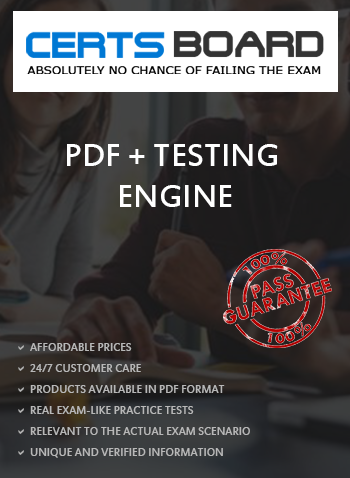
Last Update Dec 13, 2025
Total Questions : 134
With Comprehensive Analysis

Last Update Dec 13, 2025
Total Questions : 134


TOGAF Enterprise Architecture Combined Part 1 and Part 2 Exam
Last Update Dec 13, 2025
Total Questions : 134 With Comprehensive Analysis
Why Choose CertsBoard
Customers Passed
The Open Group OGEA-103
Average Score In Real
Exam At Testing Centre
Questions came word by
word from this dump

Try a free demo of our The Open Group OGEA-103 PDF and practice exam software before the purchase to get a closer look at practice questions and answers.

We provide up to 3 months of free after-purchase updates so that you get The Open Group OGEA-103 practice questions of today and not yesterday.

We have a long list of satisfied customers from multiple countries. Our The Open Group OGEA-103 practice questions will certainly assist you to get passing marks on the first attempt.

CertsBoard offers The Open Group OGEA-103 PDF questions, web-based and desktop practice tests that are consistently updated.

CertsBoard has a support team to answer your queries 24/7. Contact us if you face login issues, payment and download issues. We will entertain you as soon as possible.

Thousands of customers passed the The Open Group Designing The Open Group Azure Infrastructure Solutions exam by using our product. We ensure that upon using our exam products, you are satisfied.
Which of the following describes the practice by which the enterprise architecture is managed and controlled at an enterprise-wide level?
Exhibit
Consider the illustration showing an architecture development cycle Which description matches the phase of the ADM labeled as item 1?
Which ADM phase focuses on defining the problem to be solved, identifying the stakeholders, their concerns, and requirements?